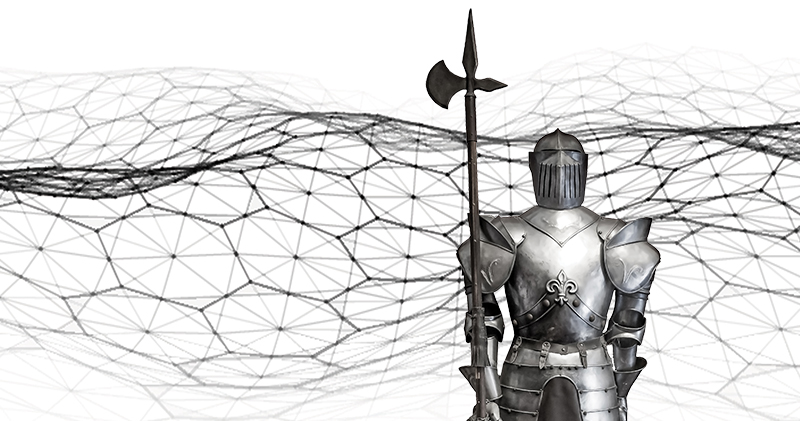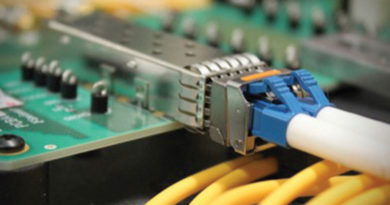A Fine Mesh We’re In!
Mesh. It’s a term that goes way, way back, to the Middle Age art of “chainmail” — where “mail” stems from the French, “maille,” meaning mesh. If you’re thinking Celtic suits of armor, or even that Beowulf-looking guy at the medieval festival this summer, you’re in the zone.
These days, meshes are all around us, but, like most things in digital times, they’re anything but tactile. One example is gaining considerable conversational momentum — the Wi-Fi mesh. As such, it is the focus of this installment of Nerdy Little Secrets.
Few conveniences matter more than a solid wireless connection for all of your digital stuff, from the phone in your pocket to the TV on your wall. If you have a few nightlight-looking Wi-Fi extenders popped into the electrical outlets in your home or workplace, to spray the signal farther than it went before, you already know this concept.
Here’s the background: Once upon a time, Wi-Fi didn’t reach the farther nooks and crannies in some homes. Wi-Fi “repeaters” came to the rescue, in the form of a second or third access point (AP) to blanket a home with signal.
This caused connectivity mischief. My favorite example: The “sticky client” problem, where connected devices (the “clients,” like your phone, laptop, etc.) capriciously latched on to a Wi-Fi repeater — even if there was no throughput, and as opposed to connecting to a more suitable AP or repeater. Here’s how it went down in real life: You walked in the door. Your phone’s Wi-Fi latched on to the first AP. When you ventured to the other end of the house, nearest the second AP, your phone stayed glued to that first AP. Plus they were a pain to set up, because each additional AP needed to know the name and password to its home network.
Fun fact: Ask any retailer what the #1 most returned product was in 2015. If you guessed Wi-Fi repeaters, take the rest of the day off!
Next came proprietary “multi access point” solutions — in large part, where we are today — with software to “mesh” connections across Wi-Fi APs, and intuitively steer connected clients between bands and to the optimal connection. Progress! But. They only work if you use Wi-Fi gear from the same company, and rarely (if ever) work across vendor boundaries.
A customer experience challenge ensued: Why couldn’t there be a way to buy one AP from vendor A, and another from vendor B, and another from vendor C, and they all work?
Enter EasyMesh, a certification program from the Wi-Fi Alliance, which aims to smooth the differences amongst proprietary mesh solutions, so that differently sourced APs could discover and communicate with each other, via the IEEE’s 1905.1 protocol. Version 1 of EasyMesh came out in 2018; it defined the messaging such that SSID info can move across extenders, and channel frequencies shared, to potentially solve the sticky client problem. A version 2 is expected next year, with even more network-side Wi-Fi goodness.
That’s the good news. The bad news: While EasyMesh is taking hold in the types of Wi-Fi gear purchased and installed by service providers (AirTies, Plume and their ilk), it’s not necessarily making a dent in the stuff people buy at retail. As a point of reference, fewer than a dozen products are currently EasyMesh certified. By contrast, devices certified to be compliant with the various Wi-Fi 802.11 flavors typically number in the hundreds.
But wait! There’s more. It wouldn’t be a connectivity conversation if we didn’t somehow loop in the cloud. Clouds are good for Wi-Fi connections for lots of reasons. The reasoning: You can do a lot more processing and fancy stuff in the cloud than you can on whatever’s inside that $40 AP from Best Buy.
In the case of Plume (and I learned this first-hand at a Smart Home session I moderated during the recent SCTE Cable-Tec Expo), its cloud is already managing machine data from 350 million devices, worldwide, and isolating something like 250 security threats, per household, per month. It recently open-sourced some of its cloud-based Wi-Fi components to an initiative called OpenSync, described as “cloud-agnostic open source software for the delivery, curation, and management of services for the modern home.”
Maybe we’ll get to that “cloud agnostic” bit the next time, but for now, know that you’re in a pretty good place for your Wi-Fi life to get all meshed up.
 Leslie Ellis,
Leslie Ellis,
President,
Ellis Edits Inc.
leslie@ellisedits.com
Leslie Ellis is a tech writer focused on explaining complex engineering stuff for people who have less of a natural interest than engineers. She’s perhaps best known (until now!) for her long-running weekly column in Multichannel News called “Translation Please.” She’s written two broadband dictionaries, one field guide to broadband, and is a behind-the-scenes tech translator for domestic and global service providers, networks, and suppliers. She’s served as board member of the Rocky Mountain chapter of the SCTE since 2015, and is a 2019 Cable Hall of Fame inductee.




